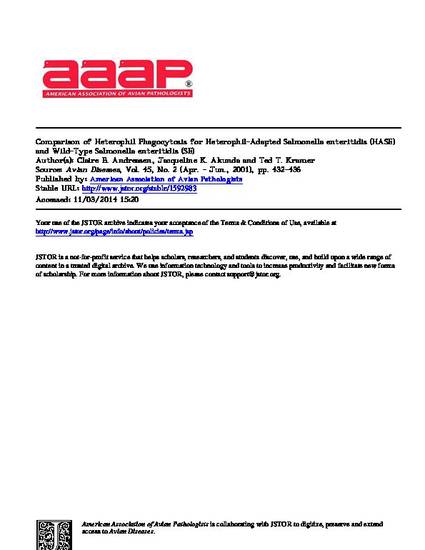
Serial passage of Salmonella enteritidis (SE) yields heterophil-adapted SE (HASE) strains that have resulted in decreased shedding of SE in feces and reduced egg contamination. Additionally, increasing the number of heterophil passages further reduced the number and frequency of fecal shedding. To evaluate SE and heterophil interaction, nine SE strainsw ere fluoresceini sothiocyanate-labeledw hen viable. There were six wild-types:S E TK 474, SE TK 584, SE TK 599, SE TK 600, SE TK 655, and SE TK 657; and three HASE strains: TK 499 heterophil adapted five times, TK 598 heterophil adapted six times, and TK 605 heterophil adapted 11 times. Trials were repeated seven times in duplicate with heterophils isolated from seven healthy chickens. Heterophils were incubated with the bacterial strains at 41 C for 15 min, and 10,000 heterophils were analyzed by flow cytometry. Percentage of phagocytosis and mean channel number of fluorescence were compared. Both parameters were significantly increased for all HASE-type strains compared with wild-type, nonadapted SE strains. Increased phagocytosis of HASE bacterial strains may be significant in processing and elimination of the HASE strains and may be related to the protective effect of HASE by decreased shedding of wild-type SE challenge strains.
Available at: http://works.bepress.com/claire_andreasen/16/

This article is from Avian Diseases 45 (2001): 432-436, doi:10.2307/1592983. Posted with permission.